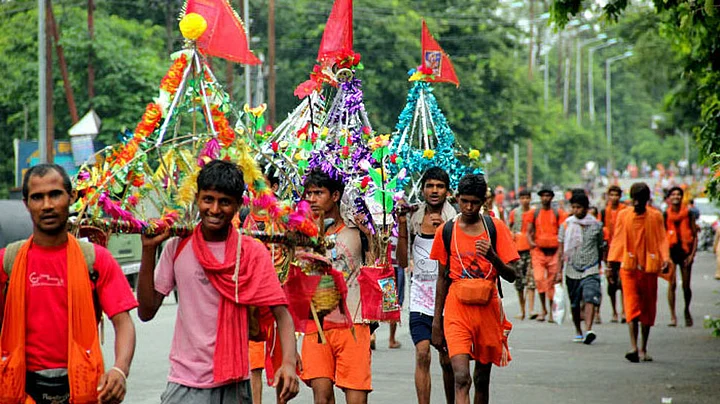It’s hard to miss hordes of saffron-clad Shiva devotees, walking barefoot, this time of the year, often accompanied with blaring music in praise of the Hindu deity.
The devotees are part of the annual Kanwar Yatra, a pilgrimage of Lord Shiva devotees, which has been postponed this year due to the increasing number of COVID-19 cases in the country. The yatra was expected to begin on 6 July.
The water is gathered from Haridwar, Gaumukh and Gangotri in Uttarakhand and Sultanganj in Bihar. Once the pilgrims return to their hometowns, the gangajal is used to anoint ‘Shivalinga’ on the amavasya (new moon) day, popularly known as Maha Shivratri.
The Origin of the Kanwar Yatra
Two mythological stories explain the origins of the kanwar yatra.
The first is related to the origin of amrit – or the nectar of immortality. As narrated in the Bhagavata Purana, the divine beings emerged from samudra manthan (or the churning of the ocean of milk). But a highly lethal poison, too, emerged from the ocean – the remedy of which was sought by Lord Shiva. If legend is to be believed, Lord Shiva consumed the poison to protect the living world, but his wife Parvati held him by the neck to prevent the effect of the poison from destroying the worlds inside him. The practice of giving water to Shiva began henceforth, in an attempt to reduce the negative effects of the poison.
The other origin story is of Lord Parshuram, the renowned devotee of Shiva, who was believed to be the first to undertake the kanwar yatra. He laid the foundation of the Shiva temple in Uttar Pradesh’s Pura, and fetched gangajal every Monday in the month of saavan for Shiva's worship.
Where Do Kanwariyas Come From?
Over the years, the kanwar yatra has grown to phenomenal proportions. With over 20 million kanwariyas having gone to pilgrimage in 2016, the group has become the bane of traffic policemen and law and order situation as devotees flock the highways, and their committees set up tents along the road for replenishment.
The demographic of the group has mostly been male, with only a small proportion of women and the elderly.
The yatris come from all parts of the country, but participants from Delhi, Uttar Pradesh, Haryana, Rajasthan, Punjab, Bihar, Jharkhand, Chhattisgarh and Madhya Pradesh are the most common.
(At The Quint, we question everything. Play an active role in shaping our journalism by becoming a member today.)
